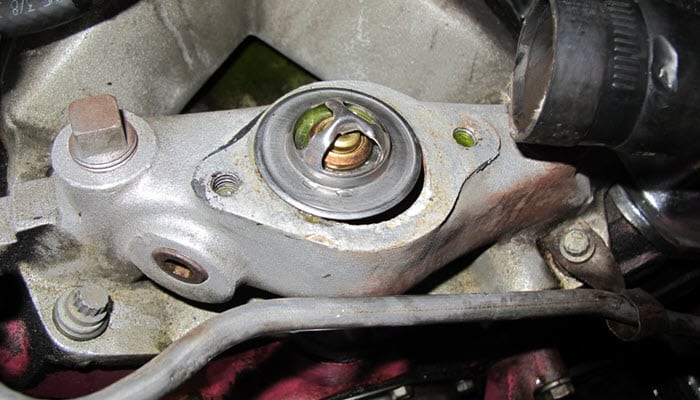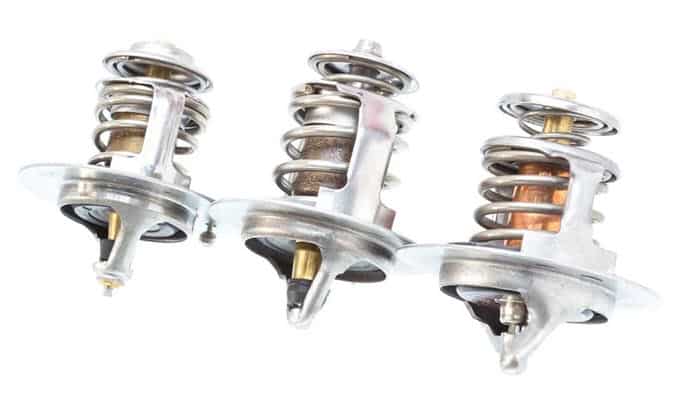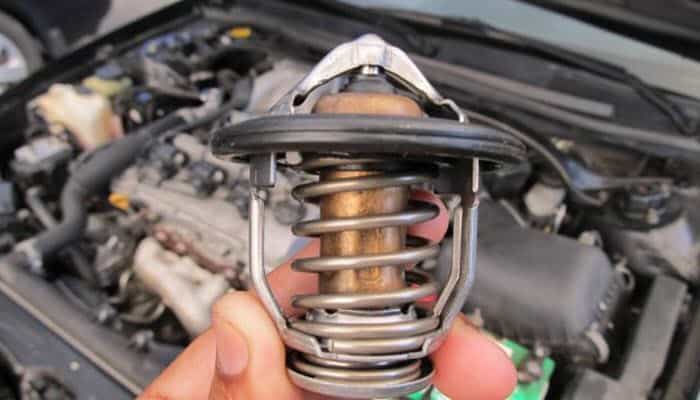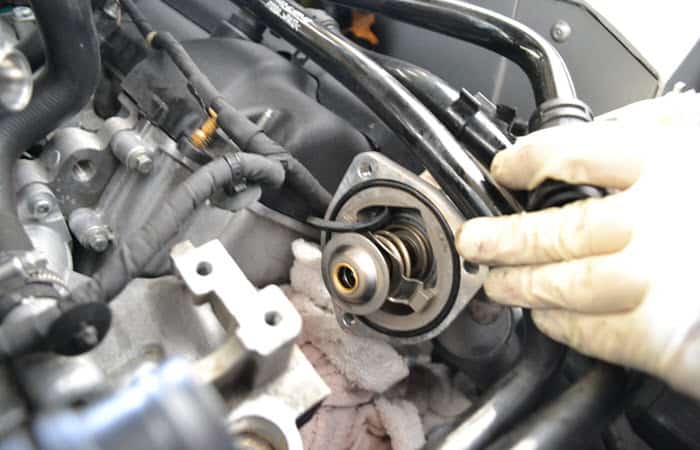Whenever you turn on your car engine, it spontaneously builds up heat. This is a normal progression (a good sign that it is working). As you drive your car for a period of time, its engine heats up. The moment you shut it down, it also gradually cools down.
Depending on its activity, your engine would warm up or cool down. Having said that, your engine alone won’t “know” when it is overheating. To maintain the optimum temperature suitable for your engine, you need a car thermostat.
Function
Thermostats are located between the engine and the radiator of your vehicle. Mostly built-in kits in modern cars, car thermostat mainly serves as the “control center” that regulates the volume and flow of coolant that goes into the engine.
Cooling system
Your car engine performs based on an optimum temperature range (usually around 2000F). As the saying goes, “too much of anything is bad.” In case your engine overheats, it directly performs poorly or, worse, get damaged. For this reason, coolant helps in regulating the optimum engine temperature. Once your engine gets hot, the car thermostat allows coolant to flow and cool the engine.
Enable heat build up
But other than that, car thermostat also makes sure that your engine reaches the ideal operating temperature as fast as possible (thus, it blocks the flow of coolant every time your engine is still building heat). This is an important feature to maximize the performance and potential of your engine. It also reduces the emission of other harmful chemicals and unwanted engine wears.
How Do Car Thermostats Work

The magic of your car thermostat is the tiny cylinder (with a rod connected to the coolant valve) placed at the engine-side. This device acts as your temp sensor. It is filled with a wax pellet that melts when the temperature reaches around 1800F. Every time it melts, it expands and pushes the rod which in turn opens the coolant valve. This device is basically the backbone of your whole cooling system.
What are the Most Common Car Thermostat Problems

Though it doesn’t happen always, issues on car thermostat still occur from time to time. One of its earliest sign would be your engine overheating soon after you run it.
In general, two problems developed due to a stuck thermostat – may it be in a closed or opened position.
Stuck in Opened Position
The continuous unregulated flow of coolant which results in a drastic lowering of engine temperature. This fastens the wear and tear of your engine. If you find your engine take long very it warms-up, a bad thermostat is likely one of its reasons due to the excess of coolant flow.
Stuck in Closed Position
This is the opposite of the first. When it is stuck on closed position, it would not release any coolant which would then result in overheating (and worse, self-destruction).
Cause of Irregular Engine Temperature
Other than your car thermostat, irregular engine temperature may also be a result of other issues. Listed below are some off the most common reasons connected to this problem.
- Clogged radiator and faulty radiator fan
- Leaks in the cooling system
- Low level of coolant
- Faulty water pump / bad water pump belt
- Faulty radiator hose
How to Check Your Car Thermostat

When you are still not sure about the reasons for your irregular engine temperature, you can always do a quick thermostat check to see possible problems.
- See if your engine and radiator are cool enough to be checked. You do not want to get a first-degree burn in the process.
- Find the thermostat under your hood. Just follow the upper radiator hose towards the engine since its end is connected to the thermostat housing. In general, car thermostat is also located in the housing.
- Check your thermostat. You can easily do this by removing the radiator cap to see the flow of coolant. To start, up your engine for a few minutes. Examine the neck of your radiator filler to see the flow of coolant. Since your car has still not reached its optimum operating temperature, the coolant should not be flowing. If it is flowing, it only means that your valve is open. In most cases, you need to replace your thermostat to address this problem.
- In case the coolant does not flow, wait longer until your engine heat builds up and reach its operating temperature. If your temperature gauge starts to rise and yet your coolant is still not flowing, this means that your valve is stuck in a closed position.
How to Replace Your Car Thermostat
This is a general guide on how to replace your car’s thermostat in case of any problems.
- Again, see if your engine and radiator are cool enough to be checked.
- Remove the radiator hose out of the hood by pulling off the clamp.
- Remove the hose. Prepare a rag because excess coolant would likely drip off.
- Loosen the bolts that secure the thermostat in place. Remove the old thermostat out.
- Remove the remaining gasket from the housing. Wipe it all out with a clean dry cloth.
- Install the new thermostat. You can also add more engine coolant in case your levels are low. Afterward, reattach all of those things that you removed, including bolts, hose, and radiator hose clamp.
- To determine if your installation is successful, up your engine and observe its build up until it reaches operating temperature.
- If your initial test sees no problem, take your car for a test drive. While driving with your new thermostat, always check the temperature gauge needle to see if things remain stable and normal. Do not forget to enjoy your drive!
Summary
All in all, running your car engine whenever it is too cold or too hot would result in poor performance and damages. It causes engine malfunction, wear and tear, emission of harmful substances, to name a few. To address this problem, your car thermostat maintains the optimum temperature for your car. It regulates the flow of coolant and it makes sure that your engine run within the optimum set of the temperature range.


